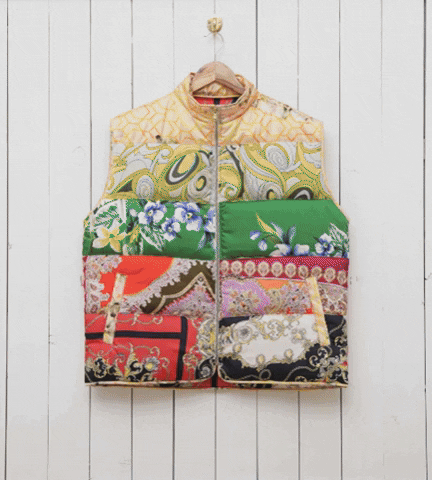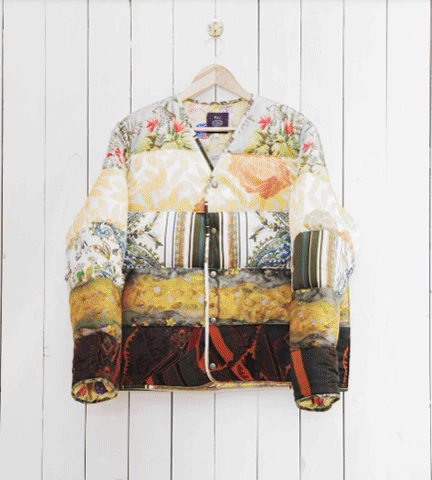Aspen, CO — Our popular patchwork Puffer Vest from our Winter 2024 release is now available re-stocked online and in stores. Our puffer vest is made by hand from deadstock silk fabrics that we hand-select in the Medina in Marrakech, and then we piece together the final patchwork design at our atelier.
Shop our Puffer Vest now available re-stocked online and in stores from our Winter 2024 release.
Read on for a brief history of the puffer jacket and puffer vest over the last 100 years. Follow their history dating back to the first expedition to Mount Everest in 1922 as garments designed for warmth and protection against the elements to their aesthetic rise with Milanese youths in the 1980's to their presence as fashion staples today embraced by everyone from your your dad to Brooklyn hipsters to Lady Gaga.
Conception and Early Development: Stage I
The origins of puffer jackets and vests are almost always attributed to Eddie Bauer in the late 1930's. However, the true origins date back a decade before to 1922 when George Finch, an Australian invited on a British expedition -- the first ever -- to climb Mount Everest. It is recorded that Finch's puffer jacket was bright green, custom made from hot air balloon fabric, and called an "eiderdown coat".
A decade later, Eddie Bauer sought to design an alternative to his woolen jacket that froze and caused him to suffer from hypothermia on a fishing trip. In 1940, Bauer patented a bulky and utilitarian jacket made from quilted fabric with duck feather filling. While it worked for the times and provided outdoor enthusiasts with excellent insulation, it lacked the sleekness and style we associate with modern puffer jackets and vests.
Around the same as Bauer, designer Charles James introduced a jacket (pictured above in an October 1938 edition of Harper's Bazaar) that resembled a bed quilt. While the jacket was a testament to his ability to pattern cut, this jacket James designed, as he later stated, was likely to have very little commercial success in the fashion industry because of its difficulty to replicate as well as technical features that would impede natural movements in the arms and neck. Nonetheless, his quilt-jacket design gained popular influence over 30 years later.
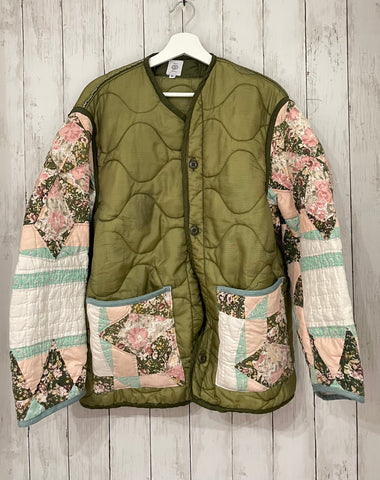
While slightly different in its pattern cut and design than the puffer jacket and puffer vest, conceptually, the M-65 designed military liner does the same job: provides insulation and warmth in cold weather. Introduced for the first time in 1965, the M-65 jacket featured the removable liner that was polyester filled and provided military personnel with a key option to add or remove depending on the weather conditions.
Function to Counter-Culture: Stage II
With not only similar silhouettes and structures to the puffer jackets designed by Finch, Bauer, and James, the M-65 liner jacket also became more famous over time for its appropriation by civilians to counter its original technical uses. While it was issued to US soldiers in Vietnam, US civilians and those on the fringes of society (rebels with or without a cause) protesting the war efforts during and after the war wore M-65 liners casually and as symbols of protest.
In the 1970s, the popularity of outdoor sports and activities surged worldwide, leading to increased demand for lightweight, high-performance outerwear. Brands like The North Face and Patagonia responded by producing puffer jackets and vests that combined functionality with style. The vests featured improved materials and construction techniques, making them more durable and better suited for activities like hiking, skiing, and camping.
Meanwhile, by the mid-1980's in Europe, youth took notice of the technical sportswear movements happening in the US and appropriated them for casual streetwear.
The affluent Milanese youth (pictured above) started to hang out at Il Panino, an Italian snack bar. What started at one shop became a trend all over Milan and eventually adopted an Americana-inspired style -- technical-wear-turned-casual-wear -- when they dubbed designer Moncler puffer jackets as the must-have hangout piece.
Paninaro style (derived from the Italian word 'panino' meaning sandwich), as it was referred to locally, was largely based in Milan as sales at Moncler indicated that year indicated. About 75% of the jackets sold worldwide came from sales just in Milan.
The Moncler puffer jackets at the time were extremely heavy and not water-repellent, which was far-fetched for sporting as every day streetwear in rainy Milan. These puffer jackets were only intended for technical performance activities, mostly skiing, but much like the M-65 liner jackets during and after the anti-Vietnam anti-War movements in the US, the jackets symbolized an anti-conservative movement. The jackets symbolized a freedom and a shift towards a lifestyle free from the city-norm, from unnecessary struggles, and from partisan politics.
Counter-Culture to Everyday Streetwear: Stage III
Celebrity culture. Supermodel athletes. Star musicians. Your dad's favorite vest. Over the last 30 years, the lines have blurred between what we see high-fashion athletes, supermodels, celebrities, and musicians wearing and the styles available to shop us as every day consumers. The accessibility to wearing what is in vogue no longer means we need no longer to break open daddy's piggy bank to sport a Moncler puffer jacket.
A major reason is due to the affordability in the emergence of new-age fashion movements on both ends of the sustainability spectrum -- fast fashion, with seasonal cycles from Zara, Shein, and others, and on the other end, consumer-conscious, vintage-inspired, slow-fashion brands -- so what used to be available only for the upper echelons of society is no more.
Most classic styles, including puffer jackets and puffer vests, now over 100 years since their conceptions, are available and in demand every winter -- and in a wider patterns, colors, and cuts than ever before. Through many winters over the past 30 years, puffer jackets and vests have been centerfold, must-have additions to our winter wardrobes. And 2024 is no different -- just take a walk around Brooklyn or ride into Manhattan on the J train. Walk past a Starbucks in SoHo. Even in LA, where the winters are mildly chilly (at worst), puffer jackets are everywhere.
What began over a century ago with a trek up a mountain has taken over the winter wardrobe. From fashion capitals in Tokyo, Paris, London, Los Angeles, Milan and New York, and all the cities in between, the puffer jacket is now a modern wardrobe staple for men and women every winter.
Res Ipsa Puffer Jackets & Vests

We are a slow-fashion brand inspired by repurposing interesting, vintage and deadstock fabrics that would have otherwise been discarded. We believe every product should have a story.
Our first collection of vintage patchwork puffer vests and jackets started years ago. We hand-sourced vintage 70's, 80's and 90's puffer jackets and puffer vests made by brands like Patagonia, Jansport, and other sportswear brands. We added our own touch to each of these jackets and vests with hand-stitched, vintage and custom-made chenille patches. Each jacket became a one-of-a-kind, vintage-inspired creation.
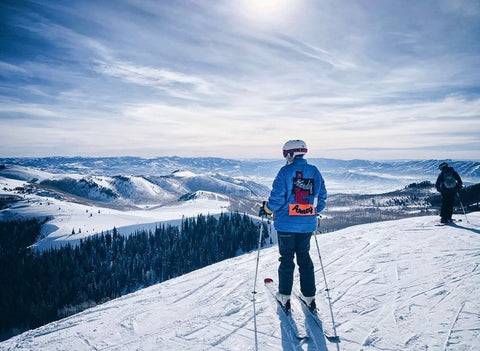
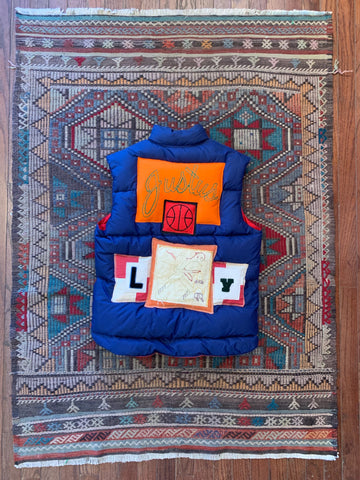
Another collection featured hand-sourced, vintage M-65 military liner jackets that we also patched with our custom chenille patches or re-purposed using vintage American quilts.

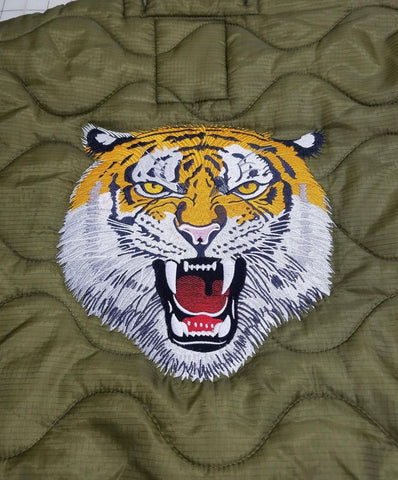
Our winter 2024 collection features our patchwork puffer jackets and puffer vests made by hand using vintage and deadstock silks we source around Marrakech. Each one-of-a-kind vest is made using deadstock silk fabric hand sewn together into one piece.
---
#ResIpsa
#OurBrandisTravel




